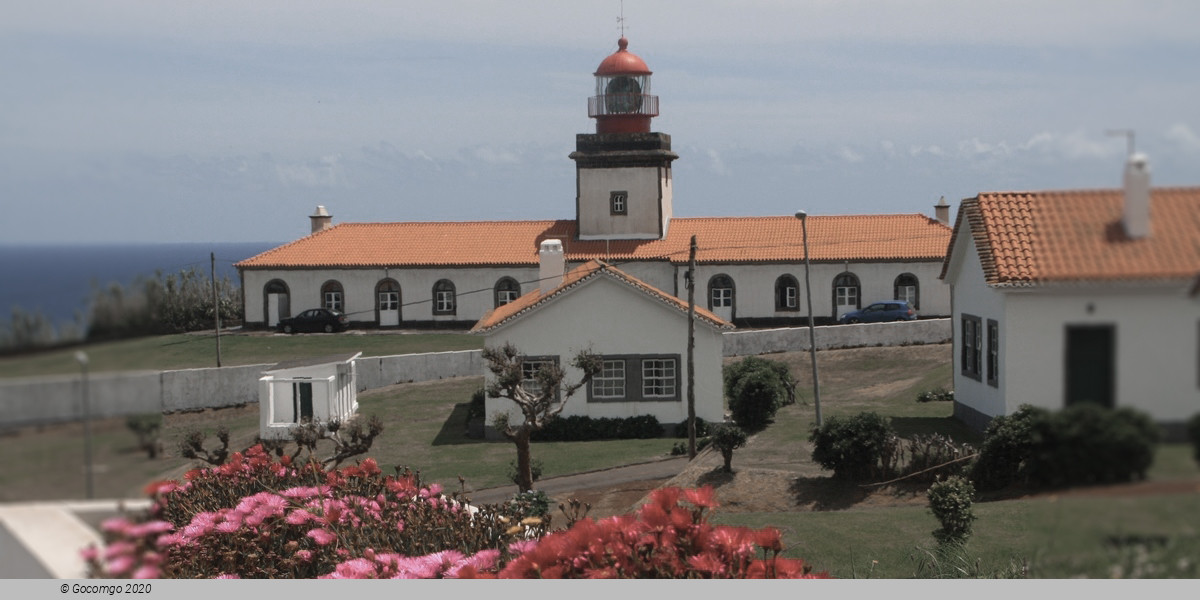Lajes das Flores

Lajes das Flores is a municipality in the western part of the Azores; it includes the southern part of the island of Flores. To the north, where it is bordered by Santa Cruz das Flores. The population in 2011 was 1,504, in an area of 70.05 square kilometres (27.05 sq mi). Its municipal seat is in the parish of the same name.
History
Flores was discovered by Diogo de Teive and his son, João de Teive, in 1452. Within a year, 20 January 1453, the islands of Corvo Marini (Marine Crows), meaning the islands of Flores and Corvo, was donated to D. Afonso, Duke of Bragança and Count of Barcelso by King Afonso V. On 20 January 1475, João Teive ceded the captaincy to Fernão Teles de Meneses, but by 1 March 1504, the captaincy was donated to João da Fonseca by King Manuel I.
The first documented reference to Lajes was to the first religious parish on the island, to the invocation of Nossa Senhora do Rosário (Our Lady of the Rosary). Lajes, the town, was the first area to be populated in the southern part of the island, around the 16th Century; in 1510, owing to its natural port and growing settlement it prospered, attaining the title of "vila" (town) by 1515 (becoming, some say, the oldest settlement in the Western Group of Azorean islands).
In 1587, the small community was destroyed by English privateers, then when the population was more numerous than in Santa Cruz.
Initially, Lajes das Flores extended from Ribeira da Silva (now part of the parish of Lomba) to Fajã Grande (which included the localities of Lajedo, Fajãzinha, Caldeira, Mosteiro, Fajã Grande and Fazenda). The western places, with the exception of Lajedo, were de-annexed to form the parish of Nossa Senhora dos Fajã, an independent parish in 1676 (and whose seat in Fajãzinha. Fazenda, was eventually de-annexed in 1919.
Around the 19th-Century, due to the rivalries on the small island, and owing to Santa Cruz das Flores' dominance economically and politically, it was undertaken to unify Lajes and Santa Cruz municipalities into one. The Civil Governor of the District of Horta (which included within it the islands of Horta, Flores, and Corvo), António José Vieira Santa Rita, in a royal report dated 1869, rationalized that the island could not support two municipalities and that on the island of Corvo "one administrative parish is enough for the population". Continuing he affirmed that "in actuality, instead of benefitting, the [municipal status] is a burden on the population who would have it alleviated...they find themselves annexed already for falling under...the Municipality of Santa Cruz, and also by the service of the industry and judiciary". On June 26, 1867, then national assembly deputy Martens Ferrão had suggested the same in that "the two islands Flores and Corvo would be constituted as just one municipality, and that it naturally should be her future." In his analysis, José António Vieira Santa Rita also proposed the extinction of Lajes, finding that the residents of the Villa would unfavorably, but that the rest of the southern settlers would tolerate it. The fusion of the municipalities was forced by discrete on November 18, 1895, and published in the official journal the following day, and included the suppression of the municipalities of Lajes and Corvo. This was appreciated and supported by the Municipal government in Santa Cruz das Flores, during this time governed by the "Partido Regenerador (Cartistas)", of which the former Martens Ferrão was a member. This change did not last too long; on January 13, 1898, the Cartistas fell out of favor, and the municipalities were restored: Lajes das Flores, Santa Cruz das Flores and Corvo. This change was welcome to the small bourgeois in Lajes; on March 17, 1898, the restored Municipal Council sent a formal letter of thanks to the Minister of the King, José Luciano de Castro, for "...the autonomy which was disputed by the populous in general in all the municipality". From that session onwards the main square of Lajes was renamed from the plain Largo do Município to Largo do Exmo. Conselheiro José Luciano de Castro.
The establishment of the Telecommunications Station and French Base on the Flores (in 1960), although in Santa Cruz, was an economic benefit to most of the citizens in both municipalities. The first aspect station to arrive in Lajes municipality was the Radionaval Station, which was installed in the Lajes lighthouse (in the center of town). The lands were expropriated for the station in 1945, although the final inauguration did not occur until 1951. In 1965 the LORAN Station of Flores was completed in the parish of Fazenda.
The completion of the commercial port in Lajes was significant in altering the roadways of the southern municipality, during the mandate of its President/Mayor Albino Cristiano Gomes.

